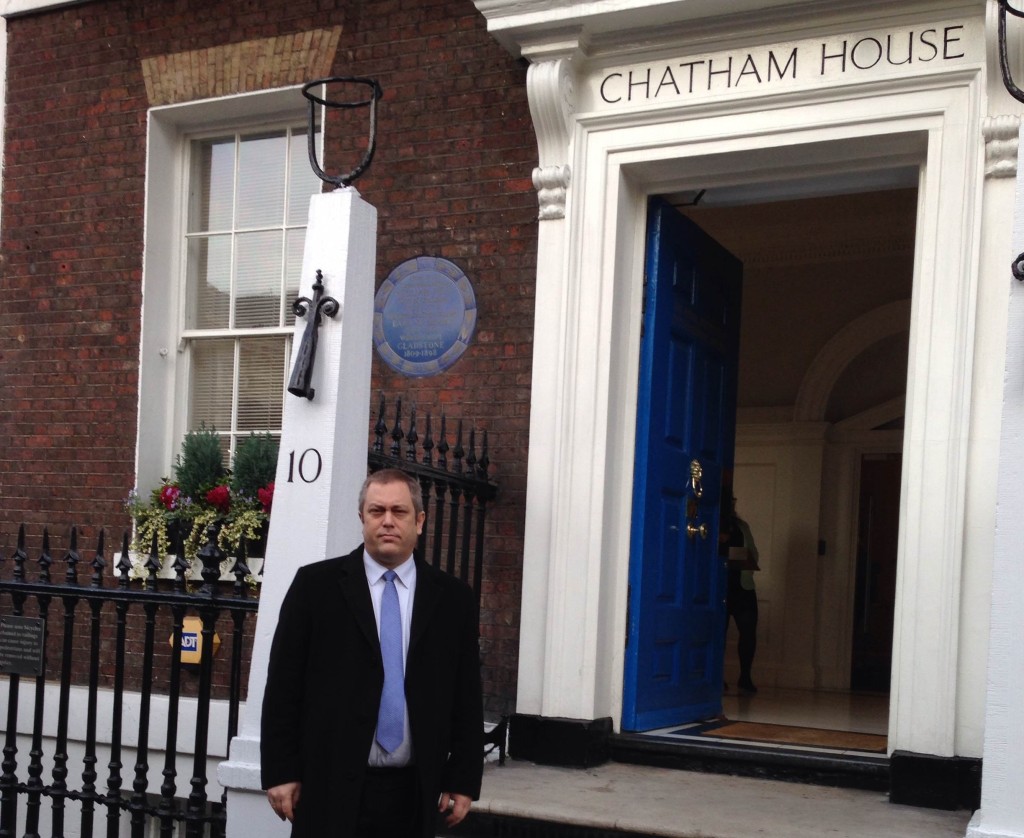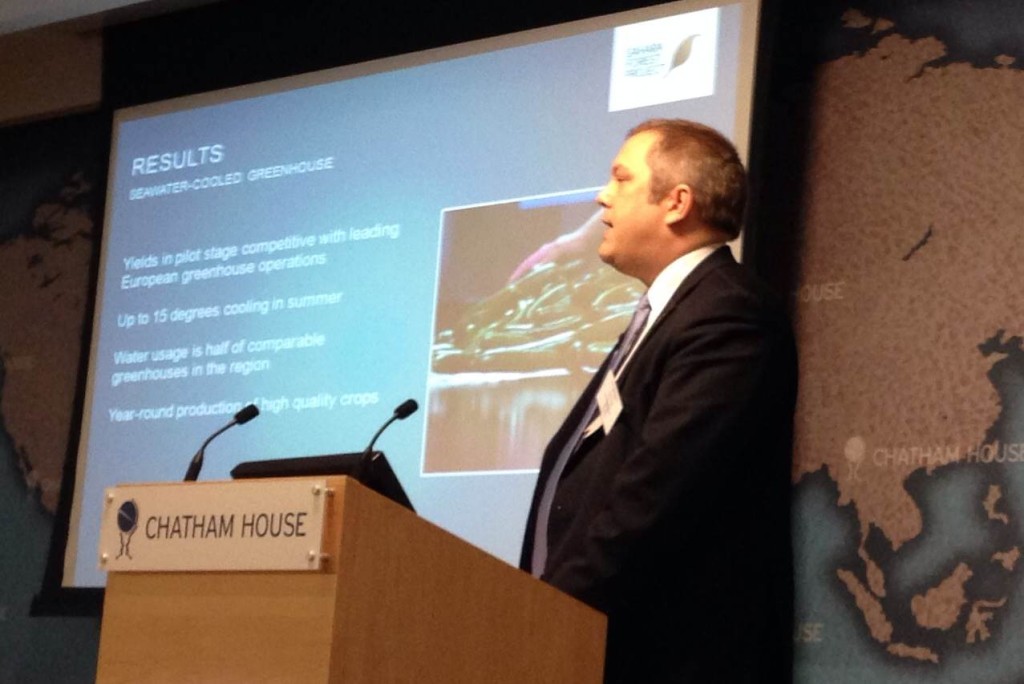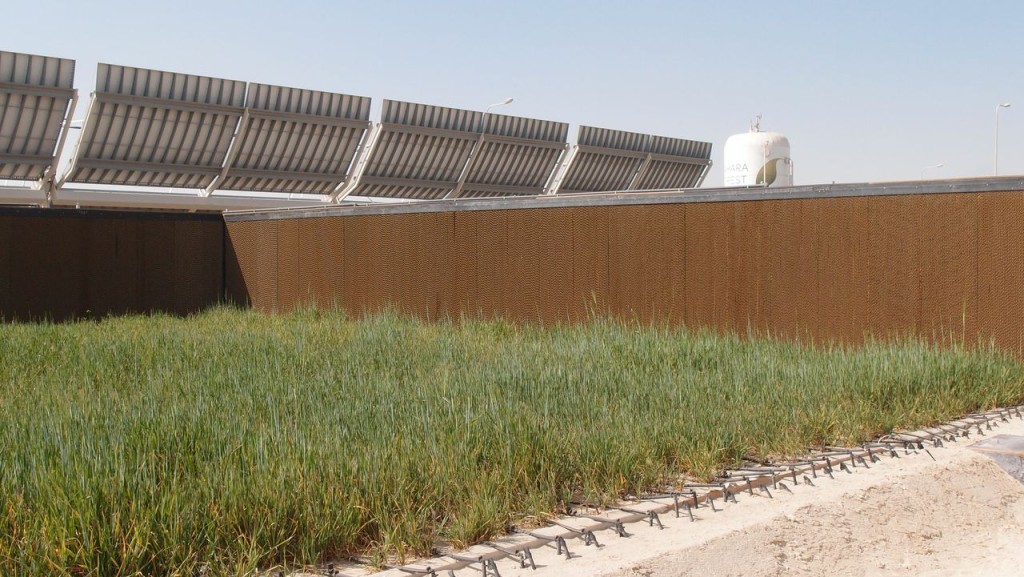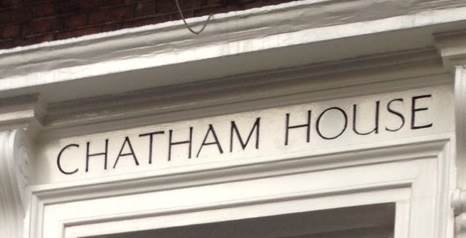
CEO Joakim Hauge explained how Sahara Forest Project has managed “the transition from slideware to hardware” in his presentation at Chatham House’s high-level conference “Food Futures – Towards Sustainable Production and Consumption”. Chatham House is ranked as one of the most important think thanks in the world.

Joakim Hauge, CEO of The Sahara Forest Project, says there is a need for more integrated solutions to face all the intertwined challenges.
Joakim Hauge was one of the key note speakers at the “Food Futures” conference hosted by Chatham House in London.
Chatham House, founded in 1920 and home of the Royal Institute of International Affairs, is a world-leading source of independent analysis, informed debate and influential ideas on how to build a prosperous and secure world for all. Chatham House hosts high-profile speakers from around the world in their programme of events and conferences.
“High level thinking”
The “Food Futures” conference considered how the production and consumption of food can be shaped to match the future needs of the global population, and asked what changes in investment, business practice and global governance might ensure this occurs in a sustainable way.
“Very useful – Good insights into high level thinking”, states a testimonial given by one of the conference participants.

The Sahara Forest Project solutions
“What technological developments could lead to disruptive change in the food system?” was one of the question raised in the conference session “Future Technologies”.
The Sahara Forest Project has solutions to increase food production to feed a growing population without large negative effects on energy consumption and CO2 emissions, on water scarcity and on desertification. Hauge presented the Sahara Forest Project technologies and synergies and explained why they are important. The technologies and synergies allow The Sahara Forest Project to use what we have enough of – like saltwater, sunlight, CO2 and arid land – to produce what we need more of – food, water and renewable energy.
The evaporative hedges have provided 10 degrees mean temperature reduction in the outdoor growing zones.

Key results
Here are some of the key results from the Sahara Forest Project’s Pilot operations in Qatar:
• The yields obtained in the pilot stage is competitive with that of leading European greenhouse operations. The yield in the pilot is above 75 kg of cucumbers per m2 a year
• The greenhouse achieved up to 15 degrees cooling in summer
• The water usage is half of comparable greenhouses in the region
• The Seawater-cooled greenhouse allows for year-round production of high quality crops, even through the hot Qatari summer
• The evaporative hedges have provided 10 degrees mean temperature reduction in the outdoor growing zones
• The greenhouse and evaporative hedges provided wet-cooling efficiencies without cooling towers for the Concentrated Solar Power facility
• 19 desert plants and vegetable and grain crops were successfully cultivated outdoors in the desert throughout the year
 “Shocking news”
“Shocking news”
Through two and a half years of studies, field testing and operations a solid foundation is now in place for enabling the roll-out of The Sahara Forest Project in Qatar, a country where only ten percent of the national food consumption is covered domestically.
With 8 hectares of greenhouse production Sahara Forest Project will match the yearly import of cucumbers to Qatar. With 40 hectares of greenhouse production Sahara Forest Project will match the yearly import of tomatoes to Qatar. With 60 hectares of greenhouse production Sahara Forest Project will match the yearly import of cucumbers, tomatoes, peppers and aubergines to Qatar. All is produced with renewable energy and saltwater.
“This is shocking news! In a positive way!” said one of the participants at the Food Futures conference at Chatham House.
